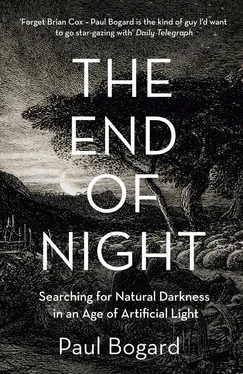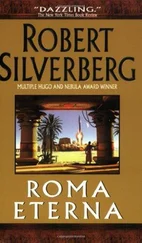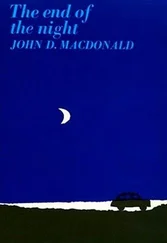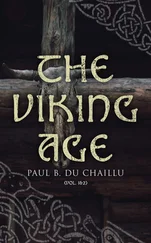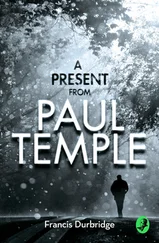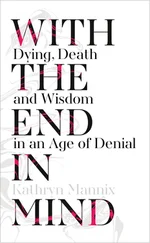On the square itself, the gaslight still burns. But several shops are lit so brightly, either window displays or entire interiors, that electric light gushes into the square, flooding the night. To see how lovely Covent Garden used to be, stroll the side streets, Crown Court or Broad Court: gaslight and cobblestones, five-hundred-year-old buildings set close across from one another.
In Covent Garden Market now, night is still here, but morning is coming fast. It’s time to walk back to the Strand, to my bed and sleep, and I have a strong feeling that when I return in a few hours the scene here will be changed. Back will be the shopping throngs, cups from Caffè Nero in one hand and shopping bags in the other, gone the ghosts of farmers, their cabbages, their dogs.
A few nights later, I am standing on Île St.-Louis, in the center of old Paris, watching the pale peach glow from nineteenth-century lamps on a bridge over the Seine, the waxing crescent moon rising in a powder-blue lavender sky.
A gas lamplighter in the Parisian darkness of the 1930s as captured by the photographer Brassaï. (© The Brassaï Estate—RMN)
There are many bright cities, but only one City of Light, La Ville-Lumière. These days the city’s nickname is often translated as “the city of lights,” and with good reason, for the lighting of Paris is certainly part of its charm and identity. But if loads of electric light were all it took for a city to be called the City of Light, dozens of cities around the world would be well positioned to steal the title. We don’t know the exact origin of the phrase, but we do know it refers to Paris’s being the center of the eighteenth-century philosophical movement known as the Enlightenment. That is, the name City of Light has as much to do with new ways of thinking as it does with impressive artificial light.
It turns out that is still the case.
“Very little about this light is spontaneous,” says David Downie, an American expatriate and author of the wonderful Paris, Paris, who has joined me for a walk through the old city. “It’s all studied. Since 1900, they’ve consciously cultivated their image. Paris was really the first to pioneer this concept of a light identity. Of using light to create an atmosphere.” Downie points to the lamps glowing on the short bridge from Île St.-Louis to Île de la Cité. “See the light fixture? It’s a pre-1890s gas model with a little chimney, on a footbridge from the 1960s: That’s what it’s all about. They’re playing not just with light but with shadow. The darker it gets, the better this bridge looks.” While few would notice this bridge during the day, at night the lighting highlights the beautiful shadow-play on the bridge’s underside. “There are a lot of little details that come out at night,” Downie says. “They’re very careful to make the light just strong enough so that you’re not going to trip, but they’ve understood that they can’t blind you. Here, they’ve created a nostalgic, old-fashioned feel with a warm blanket of light.”
One feature of the lighting in old Paris is that there are few streetlights higher than fifteen meters, essentially no lights much above the first floor. The sidewalks and streets and balconies are lit, but above that the buildings fade toward darkness. “This was all studied; they want it to be this way,” Downie explains. “The goal here is to create atmosphere, and the darker it gets, the more atmospheric it becomes.”
As darkness collects between the buildings, along the Seine, on the rooftops, French doors, and balconies, rising around gold lamplight on the ancient narrow streets of these islands where the city was born, there is an intimacy, an openness—anyone can walk these islands, stand on these bridges, wander through this history, as though the city at night is a dinner party in a wonderful old house full of endlessly accessible rooms. The fromagerie, a little bell on the door and soft cheese white paper–wrapped, the boucherie windows full of twisted-neck fowl with feathered heads still attached, the Berthillon ice cream shop sending its small cones out into the night like messengers. Pipe organ notes sift through heavy, centuries-old wooden church doors, faux wicker-backed café chairs huddle around espresso-topped tables, a ribbon of moonlight ripples on the Seine’s silver skin as it flows under bridges lit yellow-gold marching west toward the sea.
“This is the beauty of the night, a beauty ‘rooted in atmosphere’ that is not easily explained,” explains Joachim Schlör in Nights in the Big City. “I start my nocturnal walk with pleasure, and my pulse beats slower in this pleasant darkness.”
Walking and old Paris go together hand in glove, one reason so many Americans—used to cities enslaved to the automobile—revel in visiting the French capital. Recently the notion of the flâneur has gained popularity, one who appreciates, Schlör says, “the fine art of walking through a city slowly and attentively, one’s appreciation bolstered by learning.” But in Paris this walking happens not only during the day. In the noctambule, a word that in its English form, noctambulist, means sleepwalker but in French has a meaning closer to night owl, we find one who takes pleasure walking at night. The name was first applied to those Parisians who took advantage of the newly gaslit boulevards of the 1830s and 1840s, but for Downie, the quintessential noctambule is the eighteenth-century writer Rétif de la Bretonne. In terms of writing about walking at night, Bretonne paved the way, created the path. Downie often will follow Bretonne’s old route as he walks around the edge of Île St.-Louis. “Bretonne lived right over there.” Downie points. “He’d come out and walk the same way we’re walking. He’d sit out at the end of the island and think great thoughts, and then go have his nighttime adventures.”
During the years 1786 to 1793, Bretonne walked these streets of central Paris, and published his experiences in Les Nuits de Paris. That’s only half the title, though. The full title— Les Nuits de Paris, or, The Nocturnal Spectator, by Nicolas-Edme Restif de la Bretonne—points to some of the pomp with which Bretonne carried himself. In a drawing on the opening pages of his book, he sports big-buckled shoes and stockings, a cape wrapped around himself, his hair falling to his shoulders, and upon his large wide-brimmed hat an owl (and this owl, with rabbitlike ears and wings spread, has a look of surprise, as though Bretonne has glued the bird’s feet to his hat). Bretonne looks like a character—serious, thoughtful, and slightly ridiculous. And, in fact, that is how he reads. He came from Burgundy, which, at that time, was a totally dark place, and he couldn’t get over the bright lights of the big city—in the 1780s, Paris suddenly had oil lamps, and more and more of them. “He was a mad walker,” Downie explains. “He was completely bowled over by this idea that he could go out at night and walk around … and see.”
This ability to go out at night and see, one we now so take for granted, had its origins in a decree by the French King Louis XIV in 1667 that lanterns be hung on Paris streets. As admirers proclaimed that “the night will be lit up as bright as day, in every street,” the king commemorated his brilliant move by having coins minted featuring his profile on one side and, on the other, a statue of a robed figure holding a lantern and, in that lantern, a candle. And that—candles hanging over the streets of Paris—formed the first official system of public lighting in the world. By the end of the century, dozens of northern European cities had public lighting in their streets, some fueled with candles, others with oil. Paris alone lit more than five thousand candle lanterns, though only from October through March—the rest of the year relying on summer’s lingering sunlight and the monthly advance of the moon.
Читать дальше
